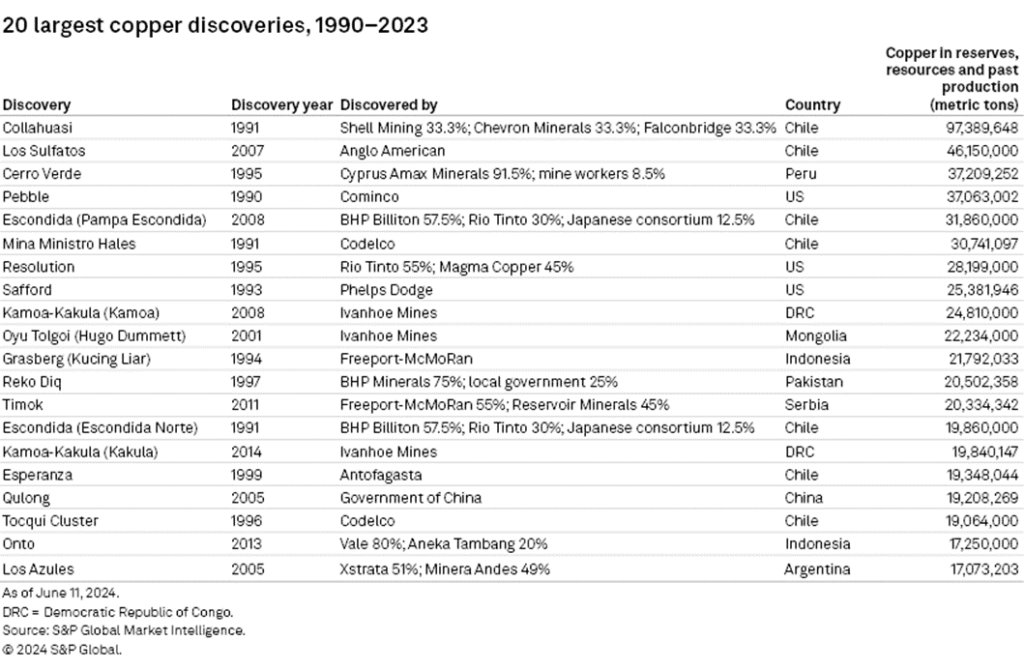While the total copper volume grew year-on-year by 4%, or 61 million tonnes, most of the increase was attributed to older discoveries, with deposits found during the 1990s accounting for 70%, or 43 million tonnes, of the growth, S&P’s analysis found.
Furthermore, only 14 of the deposits were from the past decade, accounting for only 46.2 million tonnes, or 3.5% of the total copper worldwide. Four of these deposits were made during the last five years (2019-2023), adding a measly 4.2 million tonnes.
Downward trend
These figures, as the S&P report notes, underscore the downward trend in the rate and size of major discoveries over the past decade.
Exacerbating the issue, copper exploration budgets have remained well below decade-ago levels despite surging copper prices, S&P adds. While the global exploration budget climbed 12% in 2023, this was still 34% lower than the peak of 2012, it estimates.

Commenting on the findings, S&P’s Sean DeCoff, the author, said: “The dearth of recent discoveries is a direct result of the industry’s continued focus on brownfield assets — extending known deposits and assets — rather than the generative exploration that could yield brand-new discoveries.”
According to his analysis, grassroots’ share of the copper exploration budget in the 1990s and early 2000s typically ranged between 50% and 60%. However, in a 2023 CES survey, early-stage exploration registered just 28% — the lowest on record.
“Until there is a reversal in exploration trends, the trend of fewer significant discoveries is likely to persist,” DeCoff said, also adding that any new major discovery “will most certainly not match the 1990s in size or abundance.”
Regional contributions
Latin America remains by far the biggest hunting ground for copper, accounting for 55.6%, or 730.9 million tonnes, of the discovered copper from S&P’s dataset. Exploration in the region has mostly been concentrated in Chile and Peru, which combined for 573.9 million tonnes. The top three discoveries on the S&P list are from Chile (Collahuasi and Los Bronces) and Peru (Cerro Verde).
Asia-Pacific ranked second with 21% of global discovered copper, thanks to several tier-one assets such as Oyu Tolgoi (Hugo Dummett) in Mongolia, Grasberg (Kucing Liar) in Indonesia and, more recently, Reko Diq in Pakistan.
The US and Canada are collectively ranked third with 10% of discovered copper. In the US, Resolution and Safford account for significant volume, but the nation’s largest discovery, Pebble, has been stymied by regulatory issues and public opposition, making its prospects uncertain. Seabridge Gold’s KSM deposits in Canada’s British Columbia are also facing a similar predicament, S&P says.




